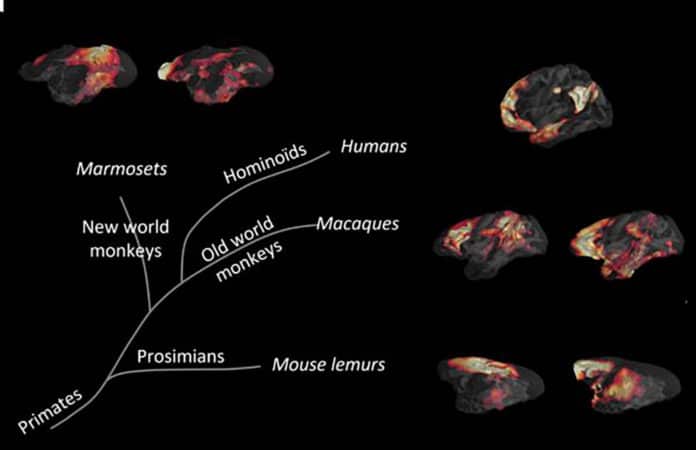Different brain regions are connected via dedicated pathways. This human default mode network (DMN) is engaged at rest and in cognitive states such as self-directed thoughts. The DMN deactivates when we process external sensory information and activates when there is less going on outside our bodies it turns on.
Whether the same DMN is also found in other primates remains unclear. An international collaboration compared data from humans and non-hominoid primates (macaques, marmosets, and mouse lemurs) to find out the answer.
They found that in all species besides humans, the brain areas consist of the DMN involving two not strongly connected systems.
Christos Constantinidis, professor of biomedical engineering, neuroscience, and ophthalmology, said, “These regions, one responsible for the suppression of external events and one for more cognitive tasks, appear to be linked only recently in evolution. This linkage may have facilitated the capacity for abstract thought that led to the rapid evolution of human cognitive abilities.”
Clément Garin, a postdoctoral fellow in the Constantinidis lab, said, “The unexpected finding changes the way we think about brain networks. Atypical connectivity patterns between brain areas are signatures of neurodevelopmental disorders and mental illnesses. These conditions are significant health and societal issues that affect individuals’ ability to function in society healthily. Understanding how unusual patterns of brain connectivity emerge could lead to better diagnosis and treatment of these conditions.”
Scientists plan to focus on how brain networks usually mature in childhood and adolescence. They will also determine what goes wrong in mental illnesses that emerge in early adulthood.
The study is conducted internationally across seven laboratories, five institutions, and three countries.
Journal Reference:
- Clément M. Garin et al. An evolutionary gap in primate default mode network organization. DOI: 10.1016/j.celrep.2022.110669
